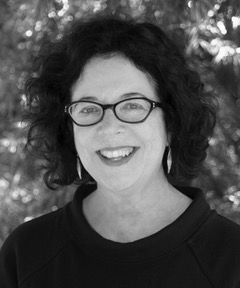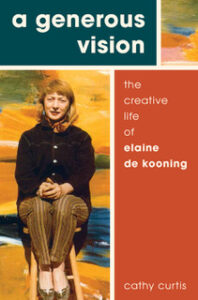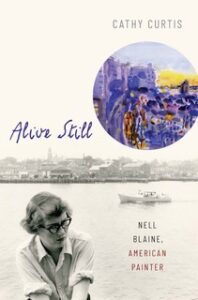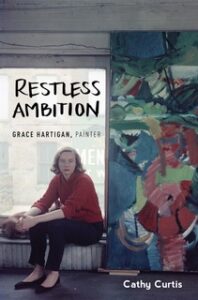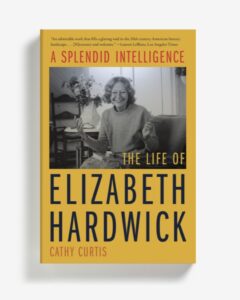Talking About Women’s History Month: Three Questions and an Answer with Cathy Curtis
I’m pleased to start off this year’s Women’s History Month series with Three Questions and an Answer with biographer Cathy Curtis.
Cathy is a former Los Angeles Times staff writer with degrees from Smith College and the University of California, Berkeley. She is the author of three recent biographies of twentieth-century artists—Restless Ambition: Grace Hartigan, Painter; A Generous Vision: The Creative Life of Elaine de Kooning; and Alive Still: Nell Blaine, American Painter—all published by Oxford University Press. Curtis also has written A Splendid Intelligence: The Life of Elizabeth Hardwick (W. W. Norton), and Edna O’Brien: The Passionate Life of a Fearless Irish Writer (forthcoming).
Take it away Cathy!
How do you choose subjects for your biographies?
I look for an artist or writer whose work I admire, who led an eventful life, and who has an archive that is open for researchers. By now, having written five biographies (the fifth is still in manuscript), I’ve learned that the most important components of an archive for my purposes are the subject’s journals and letters (written and received), followed by newspaper and magazine interviews. Of course, I also look for letters from my subject in the archives of the people to whom she wrote.
One of the questions I’m fascinated with right now is how biographers name their subjects, particularly when writing about a woman. Where do you stand on the first name/last name question in your books?
I am not an academic, which perhaps explains why I was surprised to discover the existence of the first name vs. last name issue. I use my subject’s first name freely because I have “lived” with her every day while researching and writing my books. Employing the last name strikes me as the sign of an impersonal, arm’s-length relationship with a subject, better suited to a book with a theoretical or critical approach than to an intimate biography. The notion that first-name references are somehow demeaning to a subject (whether male or female) strikes me as ridiculous. My respect for my subjects is clear from the context of the book.
You’ve written about a number of interesting women. Do you have a favorite?
My favorite subject tends to be the last one I’ve written about, in this case, the great Irish author Edna O’Brien. But each of my subjects have endeared themselves to me in a different way, often by means of overcoming a significant obstacle.
Grace Hartigan, who never attended art school, struggled to master the painting medium, ultimately developing a memorable abstract style. Elaine de Kooning found her niche in a painting genre (portraiture) that her famous husband, Willem de Kooning, had largely abandoned in favor of abstraction. The painter Nell Blaine prevailed against enormous odds after becoming a paraplegic in her late thirties, by simplifying her canvases and loosening her technique. The author Elizabeth Hardwick kept writing her deeply considered essays despite the ongoing stress of coping with the mental illness of her celebrated husband, the poet Robert Lowell.
By the way, I was intrigued to discover that none of these women were outspoken feminists: they all viewed themselves essentially as independent agents. Women artists who managed to carve out careers in the 1950s tended to believe that superior work would triumph, so there was no need to give women a special break. For Elizabeth Hardwick, great art always trumped ideology; she disparaged the novels of feminist writers that were poorly written. She also believed that women’s great strength is fortitude, a quality that allows them to carry on in the face of disappointment and hardship.
A question from Cathy: What overlooked woman from the past would YOU like to read about in a biography, and why?
A once famous and now largely forgotten artist/writer named Rose O’Neill (1874-1944). She was the creator of the Kewpie doll, based on her cartoons with the same character, and the first person to license characters of her own creation on an international scale. (Think of her as a predecessor to Walt Disney in some ways.) She was famous, productive, and connected to lots of famous artists. She was active in the suffrage movement–and made pro-suffrage Kewpie cartoons. She became rich thanks to her work, and died in poverty. I was exploring the possibility of a book when my current subject, Sigrid Schultz, grabbed me by the lapels and said “My turn!”
* * *
Want to know more about Cathy Curtis and her work? Check out her website: www.cathycurtis.net
***
Come back tomorrow for three questions and an answer with attorney and author Nancy Kopp, talking about her work on the first woman attorney in Wisconsin. Good stuff!





